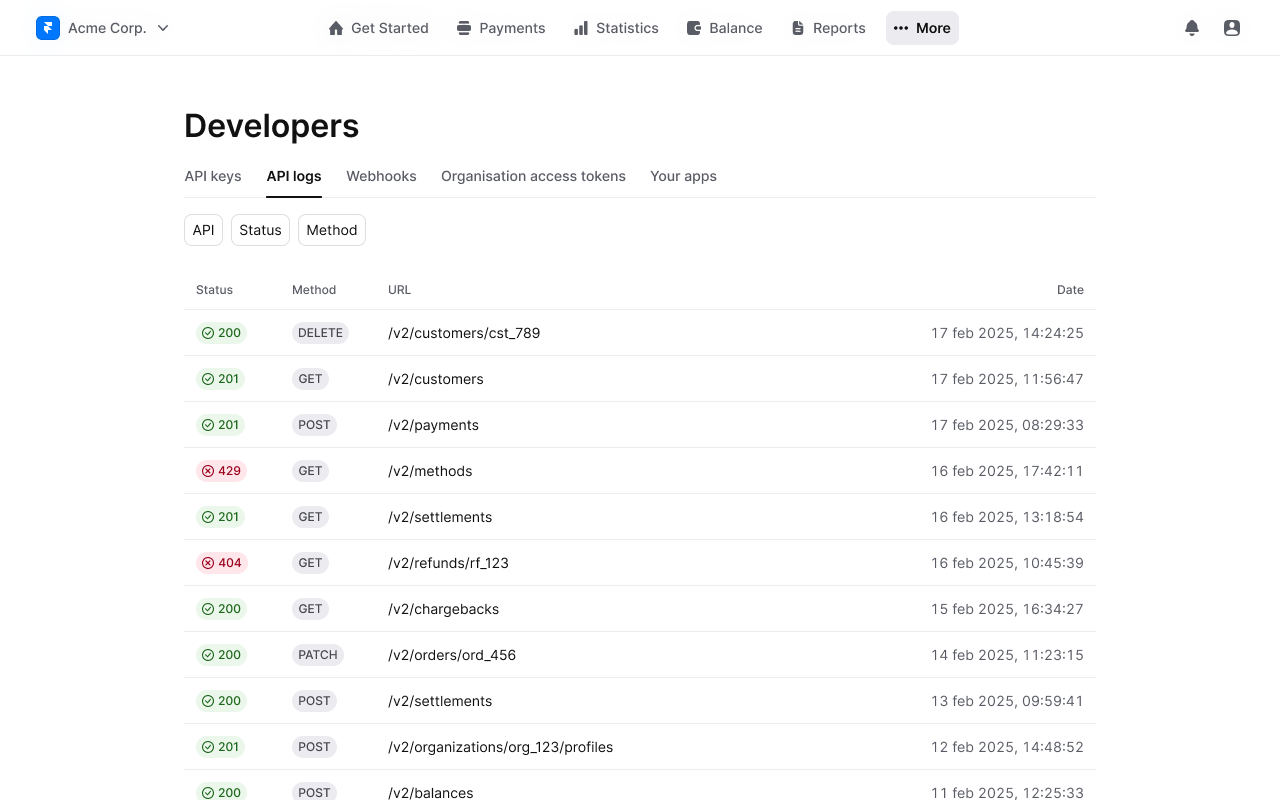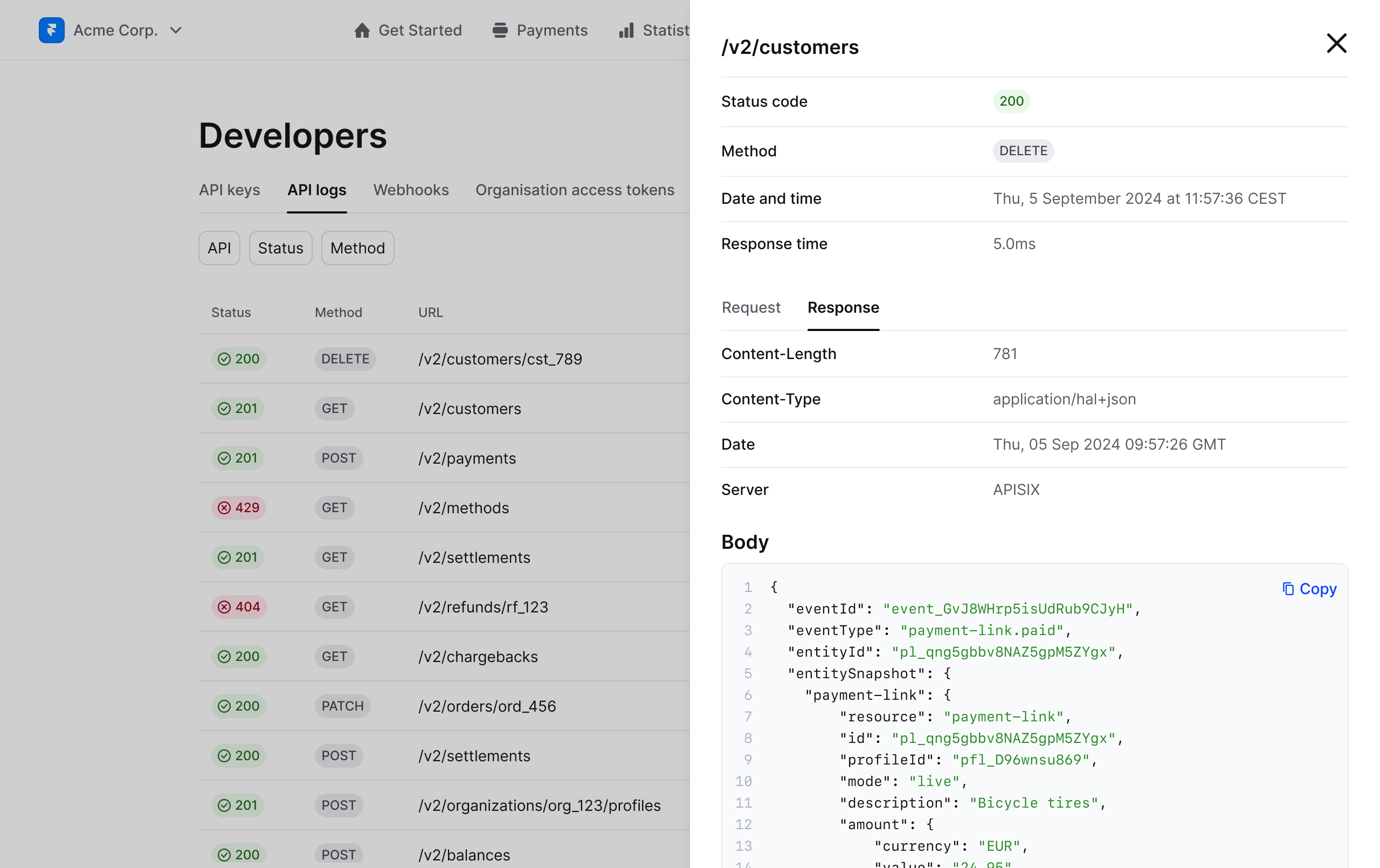What are Request Logs?
Request Logs are detailed records of incoming and outgoing requests — such as the source of requests, methods used, and other metrics — that provide detailed insights into API calls, help monitor activity and troubleshoot integrations more efficiently.
The system provides near real-time updates on transaction statuses, enabling you to monitor activity with minimal delay (up to a few minutes to display in your Web or Mobile app).
The logs consist of the API calls' data ranging from authentication details (who made the request, which OAuth application initiated it, etc.) to the full request and response body, making it particularly useful for debugging or tracking issues related to your transactions.
Using Request Logs
Mollie is storing both successful and failed requests, providing you with more control and visibility into the data exchanges between your application and Mollie.
You can find a list of all Request Logs under More > Developers > API Logs:

You can filter log entries by:
- API (endpoint)
- Status
- Method
You can also select a specific log by clicking on it and view the detailed info:
- The Request tab shows the full API request and provides key details about the call:
Content-length,Content-Type,Date,Serveretc.
Use the Copy button to copy the request body.

- The Response tab shows what the server returned after processing the request including the status code, response Body, headers, timestamp, etc.
Use the Copy button to copy the request body.

Privacy notice
Mollie enforces strict access controls, authentication mechanisms and retention policies to ensure careful and secure processing of the data:
- Request Logs are retained for a limited period of time (4 days for detailed logs, 30 days for metadata), and only minimally necessary fields are stored, in line with data minimization principles.
- Using the most restrictive possible roles you can make sure that only certain users have access to the logs.
- We also have protection mechanisms already in place for Public API routes, including Firewall rules to filter malicious traffic, Monitor traffic patterns to detect and respond to anomalies, Transport Layer Security to ensure end-to-end data transfer safety etc.
You can find more information about how we process this data and our Security practices on our website.